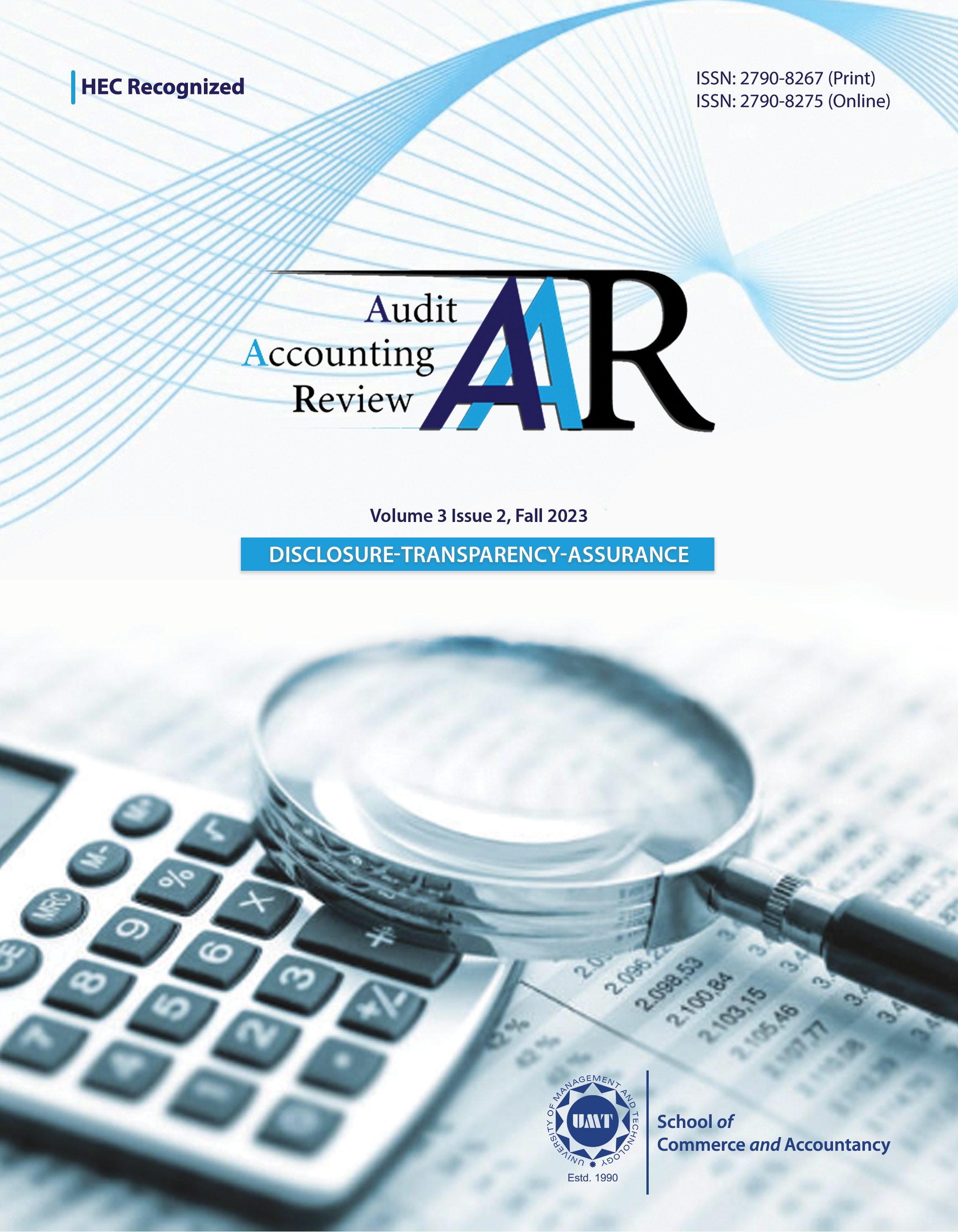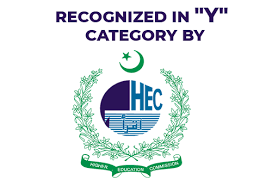Comparative Analysis of Trust in Financial Institutions Across four Provinces in Pakistan
Abstract
 Abstract Views: 0
Abstract Views: 0
Trust in financial institutions (ToF) is considered essential for an effective financial system, yet, little has been explored regarding what determines them, particularly in the case of Pakistan. By using World Values Survey data (wave 7), large cross-provincial differences are observed for the trust on banks, which confirmed the influence of several socio-demographic indicators. The findings indicate that men tend to trust banks more than women in most cases and trust in banks tends to increase with income, but not in every province. However, it decreases with age in provinces like Balochistan, and media and internet access bring novel results for the trust in financial institutions. Additionally, trusting religious and political institutions, such as trust in government or civil wars, and economic values may affect the trust in financial institutions too. Therefore, the current study suggests to policymakers that a uniform strategy may not work equally well in boosting trust in financial institutions (ToF) across all provinces of Pakistan. However, media literacy and financial education can be prioritized, particularly in areas with lower educational attainment, which could be instrumental in fostering confidence in banks.
Downloads
References
Aggarwal, N., Gupta, M., & Singh, S. (2014). Financial literacy among farmers: Empirical evidence from Punjab. Pacific Business Review International, 6(7), 36–42.
Alam, N. (2017). Islamic finance a practical perspective. Springer.
Ali, K., Khalid, U., & Khalid, Z. (2012). Promoting financial inclusion and literacy in Pakistan via G2P payment programs. Pakistan Microfinance Network for the World Bank. https://tinyurl.com/zmd78wdp
Amagoh, F. (2008). Perspectives on organizational change: Systems and complexity theories. The Innovation Journal: The Public Sector Innovation Journal, 13(3), 1–14.
Aslam, A. (2020). The hotly debate of human capital and economic growth: Why institutions may matter? Quality & Quantity, 54(4), 1351–1362. https://doi.org/10.1007/s11135-020-00989-5
Baddeley, M. (2008). Poverty, armed conflict and financial instability. University of Cambridge. https://doi.org/10.17863/CAM.5596
Badshah, I., Mellemvik, F., & Timoshenko, K. (2013). Accounting from a religious perspective: A case of the central government accounting in Islamic Republic of Pakistan. Asian Economic and Financial Review, 3(2), 243–258.
Bayar, Y., Gavriletea, M. D., & Păun, D. (2021). Impact of mobile phones and internet use on financial inclusion: Empirical evidence from the EU post-communist countries. Technological and Economic Development of Economy, 27(3), 722–741. https://doi.org/10.3846/tede.2021.14508
Blind, P. K. (2007, June 26–29). Building trust in government in the twenty-first century: Review of literature and emerging issues. 7th global forum on reinventing government building trust in government, Expert Associate UNDESA Vienna, Austria. https://www.almendron.com/tribuna/wp-content/uploads/2016/11/building-trust-in-government-in-the-twenty-first-century.pdf
Bremmer, I., & Roubini, N. (2011, January 31). AG-zero world: The new economic club will produce conflict, not cooperation. Foreign Affairs, https://www.foreignaffairs.com/world/g-zero-world
Collier, P. (2000). Economic causes of civil conflict and their implications for policy. World Bank. https://gsdrc.org/document-library/economic-causes-of-civil-conflict-and-their-implications-for-policy/
DiMaggio, A. (2009). When media goes to war: Hegemonic discourse, public opinion, and the limits of dissent. NYU Press.
Erol, C., & El‐Bdour, R. (1989). Attitudes, behaviour, and patronage factors of bank customers towards Islamic banks. International Journal of Bank Marketing, 7(6), 31–37. https://doi.org/10.1108/02652328910132060
Filipiak, U. (2016). Trusting financial institutions: Out of reach, out of trust? The Quarterly Review of Economics and Finance, 59(C). 200–214. https://doi.org/10.1016/j.qref.2015.06.006
Flavian, C., Torres, E., & Guinaliu, M. (2004). Corporate image measurement: A further problem for the tangibilization of Internet banking services. International Journal of Bank Marketing, 22(5), 366–384. https://doi.org/10.1108/02652320410549665
Furstenberg, F. F., & Kaplan, S. B. (2004). Social capital and the family. In J. Scott, J. Treas, & M. Richards, (Eds.), The blackwell companion to the sociology of families (pp. 218–232). Blackwell Publishing. https://doi.org/10.1002/9780470999004.ch13
Ghouse, G., Aslam, A., & Bhatti, M. I. (2021). Role of islamic banking during COVID-19 on political and financial events: Application of impulse indicator saturation. Sustainability, 13(21), 116–119. https://doi.org/10.3390/su132111619
Gillespie, N., & Hurley, R. (2013). Trust and the global financial crisis. In R. Bachmann & A. Zaheer (Eds.), Advances in trust research (pp 177–204). Edward Elgar. https://doi.org/10.4337/9780857931382.00019
Goh, T.-T., & Sun, S. (2014). Exploring gender differences in Islamic mobile banking acceptance. Electronic Commerce Research, 14, 435–458. https://doi.org/10.1007/s10660-014-9150-7
Hassan, J., Muhammad, N., Sarwar, B., & Zaman, N. U. (2020). Sustainable development through financial inclusion: The use of financial services and barriers in Quetta-Pakistan. European Online Journal of Natural and Social Sciences, 9(4), 691–707.
Hayat, U., & Malik, A. (2014). Islamic finance: Ethics, concepts, practice. Practice CFA Institute Research Foundation L2014-3. https://ssrn.com/abstract=2616257
Heyert, A., & Weill, L. (2023). The gender gap in trust in banks. Research in International Business and Finance, 66, Article e102032. https://doi.org/10.1016/j.ribaf.2023.102032
Hidayah, N. (2014). Religious compliance in Islamic financial institutions [Doctoral dissertation]. Aston University. https://publications.aston.ac.uk/id/eprint/24762/1/Hidayah_Nunung_N._2014.pdf
Islam, Y., Mindia, P. M., Farzana, N., & Qamruzzaman, M. (2023). Nexus between environmental sustainability, good governance, financial inclusion, and tourism development in Bangladesh: Evidence from symmetric and asymmetric investigation. Frontiers in Environmental Science, 10, Article e1056268. https://doi.org/10.3389/fenvs.2022.1056268
Jones, M., & Sugden, R. (2001). Positive confirmation bias in the acquisition of information. Theory and Decision, 50, 59–99. https://doi.org/10.1023/A:1005296023424
Kaur, S., & Kaur, K. (2022). An evaluation of availability of financial inclusion services in Punjab. International Journal of Early Childhood Special Education, 14(4), 1815–1823.
Kijewski, S., & Freitag, M. (2018). Civil war and the formation of social trust in Kosovo: Posttraumatic growth or war-related distress? Journal of Conflict Resolution, 62(4), 717–742. https://doi.org/10.1177/0022002716666324
Klayman, J. (1995). Varieties of confirmation bias. Psychology of Learning and Motivation, 32, 385–418. https://doi.org/10.1016/S0079-7421(08)60315-1
Lachance, M.-E., & Tang, N. (2012). Financial advice and trust. Financial Services Review, 21(3), 209–226.
Lewis, M. K. (2001). Islam and accounting. Accounting Forum, 25(2), 103–127. https://doi.org/10.1111/1467-6303.00058
Luo, X., Li, H., Zhang, J., & Shim, J. P. (2010). Examining multi-dimensional trust and multi-faceted risk in initial acceptance of emerging technologies: An empirical study of mobile banking services. Decision Support Systems, 49(2), 222–234. https://doi.org/10.1016/j.dss.2010.02.008
Miremadi, A., Ghalamakri, S., & Ramezani, A. (2012). Challenges in trust and security by implementation of E-CRM among banks and financial institution: A case study of e-banking in Iran. International Journal of Information Science and Management, 10(1), 99–118.
Mullainathan, S., & Shleifer, A. (2002). Media bias (National Bureau of Economic Research Working Paper No. 9295). https://doi.org/10.3386/w9295
Olson, P. D., Zuiker, V. S., Danes, S. M., Stafford, K., Heck, R. K., & Duncan, K. A. (2003). The impact of the family and the business on family business sustainability. Journal of Business Venturing, 18(5), 639–666. https://doi.org/10.1016/S0883-9026(03)00014-4
Ndubisi, N. O. (2006). Effect of gender on customer loyalty: A relationship marketing approach. Marketing Intelligence & Planning, 24(1), 48–61. https://doi.org/10.1108/02634500610641552
Pratiwi, E. K., Medias, F., & Janah, N. (2020). Perception of non-muslim religious leaders to Islamic financial institutions (Conference session). 1st Borobudur International Symposium on Humanities, Economics and Social Sciences (BIS-HESS 2019). https://doi.org/10.2991/assehr.k.200529.188
Saleem, N. (2007). US media framing of foreign countries image: An analytical perspective. Canadian Journal of Media Studies, 2(1), 130–162.
Sharma, R. (2017). Financial inclusion in Punjab: An inter district analysis. SAARJ Journal on Banking & Insurance Research, 6(4), 36–42.
Shirazi, N. S., Javed, S. A., & Ashraf, D. (2018). The interlinkage between social exclusion and financial inclusion: Evidence from Pakistan.. http://dx.doi.org/10.2139/ssrn.3183623
Soumare, I., Tchana, F. T., & Kengne, T. M. (2016). Analysis of the determinants of financial inclusion in Central and West Africa. Transnational Corporations Review, 8(4), 231–249. https://doi.org/10.1080/19186444.2016.1265763
Su'un, S. U. Possumah, B. T., Appiah, M. K., & Hilmiyah, N. (2018). Determinants of Islamic banking adoption across different religious groups in Ghana: A panoptic perspective. Journal of International Studies, 11(4), 138–154. https://doi.org/10.14254/2071-8330.2018/11-4/10
Usman, H., Tjiptoherijanto, P., Balqiah, T. E., & Agung, I. G. N. (2017). The role of religious norms, trust, importance of attributes and information sources in the relationship between religiosity and selection of the Islamic bank. Journal of Islamic Marketing, 8(2), 158–186. https://doi.org/10.1108/JIMA-01-2015-0004
Wang, X., Cai, L., Zhu, X., & Deng, S. (2020). Female entrepreneurs’ gender roles, social capital and willingness to choose external financing. Asian Business & Management, 21, 432–457. https://doi.org/10.1057/s41291-020-00131-1
Wood, S., & Lichtenberg, P. A. (2017). Financial capacity and financial exploitation of older adults: Research findings, policy recommendations and clinical implications. Clinical Gerontologist, 40(1), 3–13. https://doi.org/10.1080/07317115.2016.1203382
Zeng, Y., & Li, Y. (2023). Understanding the use of digital finance among older internet users in urban China: Evidence from an online convenience sample. Educational Gerontology, 49(6), 477–490. https://doi.org/10.1080/03601277.2022.2126341
Zulfiqar, K., Chaudhary, M. A., Aslam, A. (2016). Financial inclusion and its implications for inclusive growth in Pakistan. Pakistan Economic and Social Review, 54(2), 297–325.
Copyright (c) 2023 Aribah Aslam, Ghulam Ghouse

This work is licensed under a Creative Commons Attribution 4.0 International License.
Authors retain copyright and grant the journal right of first publication with the work simultaneously licensed under a Creative Commons Attribution (CC-BY) 4.0 License that allows others to share the work with an acknowledgement of the work’s authorship and initial publication in this journal.







